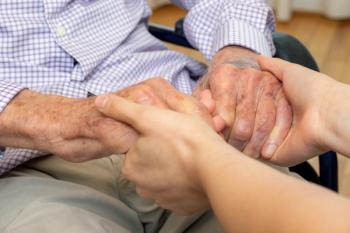
Telehealth and nursing homes: 9 takeaways from a key study
Researchers completed the first comprehensive analysis on telemedicine in skilled nursing facilities. Many nursing homes aren’t utilizing virtual visits.
Nursing homes are utilizing telehealth more than they did before the arrival of COVID-19, but not by much.
And a new study finds that there was a surge in telehealth use in nursing homes early in the pandemic, but it didn’t last.
Researchers recently completed the first comprehensive study of the use of telehealth in skilled nursing facilities during the pandemic. The
Researchers from Harvard University, Beth Israel Deaconess Medical Center, and Brigham and Women’s Hospital studied more than 4.4 million patients and more than 15,000 nursing homes.
Here are nine takeaways from the study on telehealth in nursing homes.
The early spike
In early 2020, the use of telehealth in routine visits to skilled nursing facilities rose from 0.15% to 15%. More than a third (37%) of outpatient visits were done virtually.
The vast majority of nursing homes (91%) had at least one telehealth visit in 2020.
Early in the COVID-19 pandemic, the federal government eased restrictions on telehealth, allowing more hospitals, health systems, medical groups and other facilities to see patients remotely.
Down from the peaks
After those early months of the pandemic, most clinician visits in nursing homes were being done in person. By the middle of 2021, telehealth was used for only 2% of routine nursing home visits and 10% of outpatients visits.
By 2022, 61% of skilled nursing facilities had telehealth visits, down from 91% two years earlier.
More use in rural areas
The nursing homes with the highest use of telehealth were typically in rural areas, the researchers found.
The authors suggest that’s likely a reflection of the smaller number of clinicians practicing in rural areas.
Access to psychiatry
Due to telehealth, nursing home residents had greater access to psychiatric services, the study found.
“Access to mental health care was also particularly important as depressive symptoms increased in nursing home residents during the pandemic, likely as a result of restricted visiting and increased isolation,” the authors wrote.
Many by few
Most of the telehealth visits to skilled nursing facilities came from a small number of physicians. The top 7% of clinicians in their use of telehealth provided 50% of the virtual visits in skilled nursing facilities. And the top 13% of clinicians accounted for 80% of telehealth visits at nursing homes.
Clinician preferences played a role in the use of telehealth, the study suggests.
Virtual care didn’t spur more visits
Telehealth visits at nursing homes didn’t lead to a higher volume of appointments with clinicians.
Researchers point out that’s significant because it could alleviate fears that relaxed rules on telehealth are going to lead to excessive billing.
Obstacles
Some nursing home staff said that they had more work with telehealth visits, because the visits required additional steps on top of their regular duties.
Doctors at nursing homes also pointed out that staff time to get ready for virtual visits and conduct them is another challenge.
Opportunities
Telehealth provides several advantages for nursing home residents, the authors wrote. At most skilled nursing facilities, clinicians aren’t on site during the evenings or weekends, so telehealth offers more access to providers. During nights and weekends, residents often end up being taken to the emergency department, sometimes unnecessarily.
For residents with limited mobility, seeing clinicians in a telehealth appointment can be substantially easier. For many specialty care appointments, residents have to leave the facility.
Conclusions
Researchers said that encouraging more use of telemedicine in nursing homes could offer additional services to residents.
“We found preliminary evidence that telemedicine adoption might be associated with some changes in patterns of clinical care, potentially leading to improved access to specialty care,” the authors wrote. “Continued reimbursement of telemedicine services in SNFs thus has a potential to improve resident care without substantially increasing its overall volume.”








































